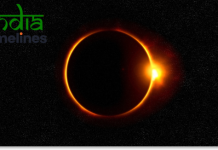
India’s space exploration endeavors have been making remarkable strides, showcasing the prowess of the Indian Space Research Organisation (ISRO) in achieving scientific and technological milestones. The latest chapter in ISRO’s ambitious journey is Shukrayaan-1, India’s first mission to Venus, which recently received approval from the Indian government. With this mission, ISRO aims to unlock the mysteries of Venus, a planet often referred to as Earth’s twin due to its similar size and composition, but with vastly different environmental conditions.
The Vision Behind Shukrayaan-1
Shukrayaan-1 is part of ISRO’s long-term vision to explore planetary bodies and advance our understanding of the solar system. Venus, despite being our nearest planetary neighbor, remains enigmatic. Its hostile atmosphere, extreme surface temperatures exceeding 450°C, and dense clouds of sulfuric acid present challenges for exploration. The mission’s primary objective is to study the planet’s surface, atmosphere, and interactions with the solar wind, contributing to global scientific knowledge about Venus.
This mission also reflects India’s growing capabilities in space exploration, positioning the country as a major player in interplanetary studies alongside space agencies like NASA and ESA (European Space Agency).
Key Objectives of Shukrayaan-1
Shukrayaan-1 aims to delve into several critical aspects of Venus:
- Atmospheric Analysis:
The mission will study Venus’s dense atmosphere, focusing on its composition, dynamics, and thermal structure. This includes understanding the presence of gases like carbon dioxide, nitrogen, and trace amounts of water vapor, which contribute to the planet’s runaway greenhouse effect. - Surface Composition and Topography:
With advanced radar and imaging systems, Shukrayaan-1 will investigate Venus’s volcanic plains, craters, and tectonic features. These studies aim to determine whether the planet still exhibits volcanic activity. - Cloud Dynamics and Weather Patterns:
Venus’s thick clouds are primarily composed of sulfuric acid. The mission will analyze their properties and observe weather phenomena like lightning, which could provide insights into Venusian climate processes. - Solar Wind Interaction:
Studying how Venus interacts with the solar wind in the absence of a magnetic field will help scientists understand planetary magnetism and its role in shaping atmospheres over time.
Instruments and Payloads
The Shukrayaan-1 mission will carry a suite of scientific instruments, each designed to address specific research questions:
- Synthetic Aperture Radar (SAR):
SAR will penetrate Venus’s thick cloud cover to map its surface in detail, revealing geological features and active volcanic regions. - Infrared and Ultraviolet Spectrometers:
These spectrometers will analyze the chemical composition of Venus’s atmosphere and detect trace gases. - Plasma Analyzer:
This instrument will study the interaction of solar wind with Venus’s atmosphere, providing data on how charged particles influence atmospheric loss. - Radio Science Experiment:
Utilizing radio waves, this experiment will measure changes in the planet’s gravitational field, shedding light on its internal structure.
Challenges in Venus Exploration
Exploring Venus presents formidable challenges due to its extreme environment:
- Intense Heat and Pressure:
Venus’s surface temperature is hot enough to melt lead, and its atmospheric pressure is about 92 times that of Earth, equivalent to conditions found 900 meters underwater. These factors necessitate robust design and heat-resistant materials for Shukrayaan-1. - Dense Cloud Cover:
Venus’s perpetual cloud cover hinders optical observations, requiring the use of radar and infrared technology for surface imaging. - Orbital Maneuvering:
Reaching Venus involves complex orbital mechanics and precise maneuvers to enter its orbit, demanding high levels of accuracy from ISRO’s engineers.
Significance of Shukrayaan-1
- Scientific Contributions:
Shukrayaan-1 will provide a wealth of data about Venus, contributing to comparative planetology and helping scientists understand why Earth and Venus evolved so differently despite their similarities. - Technological Advancements:
The mission will showcase India’s growing expertise in developing advanced spacecraft, enhancing the country’s technological capabilities. - Strengthening Global Collaboration:
ISRO’s mission could pave the way for collaborations with international space agencies, sharing data and resources for mutual benefit. - Boosting India’s Space Diplomacy:
Successful missions like Shukrayaan-1 enhance India’s reputation on the global stage, positioning the country as a leader in space exploration.
Timeline and Future Prospects
While the government has approved the mission, its exact launch date is expected to be in the early 2030s, aligning with optimal launch windows when Venus is closest to Earth. Preparatory phases include designing and testing the spacecraft, selecting payloads, and collaborating with international partners.
If successful, Shukrayaan-1 will pave the way for more advanced missions to Venus, possibly involving landers or atmospheric probes to delve deeper into the planet’s mysteries.
Global Context: Venus Exploration
India is joining an elite group of nations that have sent missions to Venus. NASA’s Magellan and ESA’s Venus Express have already provided significant insights, while upcoming missions like NASA’s DAVINCI+ and VERITAS and Russia’s Venera-D aim to continue the exploration. Shukrayaan-1 adds a unique perspective to this global effort, particularly in leveraging cost-effective and innovative approaches characteristic of ISRO missions.
Conclusion
Shukrayaan-1 represents a bold leap for India in planetary exploration, showcasing the nation’s scientific ambition and technological prowess. By venturing to Venus, ISRO not only contributes to humanity’s understanding of one of the solar system’s most challenging planets but also reinforces India’s status as a key player in space exploration.
As preparations for Shukrayaan-1 unfold, the mission promises to inspire a new generation of scientists, engineers, and dreamers, reaffirming the boundless possibilities of space research.
































Your article helped me a lot, is there any more related content? Thanks!
I was just searching for this info for some time. After six hours of continuous Googleing, at last I got it in your website. I wonder what’s the lack of Google strategy that don’t rank this kind of informative sites in top of the list. Normally the top sites are full of garbage.
You actually make it seem so easy along with your presentation however I in finding this matter to be actually something that I think I’d never understand. It seems too complicated and very wide for me. I’m looking forward for your subsequent put up, I’ll attempt to get the grasp of it!
Thanks for sharing. I read many of your blog posts, cool, your blog is very good. https://www.binance.info/it/join?ref=S5H7X3LP
Wonderful site. A lot of useful info here. I am sending it to several friends ans also sharing in delicious. And of course, thanks for your effort!
I don’t think the title of your article matches the content lol. Just kidding, mainly because I had some doubts after reading the article.
Loving the info on this website , you have done great job on the posts.
Your point of view caught my eye and was very interesting. Thanks. I have a question for you.
Most of whatever you mention happens to be astonishingly appropriate and it makes me wonder why I hadn’t looked at this with this light before. This particular piece really did switch the light on for me as far as this topic goes. Nevertheless at this time there is 1 issue I am not really too comfortable with and whilst I attempt to reconcile that with the central theme of your position, let me see what all the rest of your visitors have to point out.Well done.